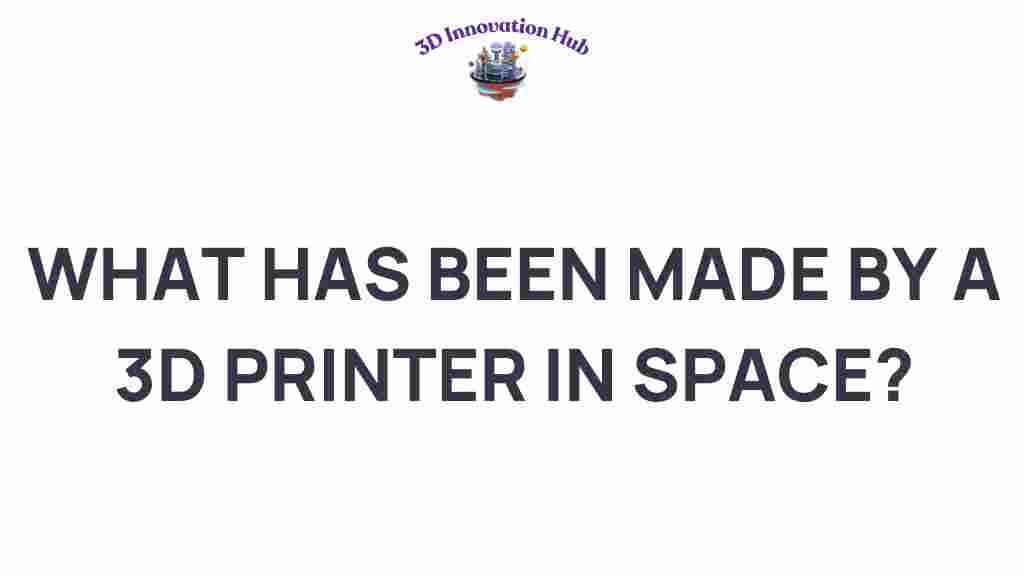3D Printing: Revolutionizing Space Exploration and Manufacturing
The advent of 3D printing has ushered in a new era of innovation, particularly in fields that demand precision and adaptability, such as space</strong exploration. With organizations like NASA leading the way, the integration of technology in manufacturing processes is transforming how we conceive of and conduct space missions. This article delves into the remarkable applications of 3D printing in space, the materials used, and the future of manufacturing in the final frontier.
The Intersection of Technology and Space Exploration
Space exploration has always been at the forefront of human innovation. The challenges of conducting missions beyond Earth require not just advanced engineering but also creative solutions to unprecedented problems. 3D printing stands out as a pivotal technology that addresses many of these challenges. Here’s how:
- On-Demand Manufacturing: With 3D printing, components can be manufactured on-site, reducing the need to transport bulky materials from Earth.
- Customization: Parts can be tailored to specific mission needs, allowing for flexibility in design and functionality.
- Resource Efficiency: 3D printing minimizes waste by using only the necessary materials to create a part.
- Rapid Prototyping: Innovations can be tested and iterated quickly, speeding up the development process of new technologies.
Innovations by NASA and Other Space Agencies
NASA has been a pioneer in utilizing 3D printing technology for various applications in space missions. Here are some notable innovations:
- 3D Printed Rocket Parts: NASA has successfully tested 3D printed components for rockets, demonstrating that these parts can withstand extreme conditions.
- Habitat Construction: Initiatives such as the 3D-Printed Habitat Challenge aim to develop techniques for constructing habitats on Mars using local materials.
- Satellite Components: The ability to print satellite parts in space could pave the way for more flexible and efficient satellite designs.
3D Printing Materials for Space Applications
The choice of materials is critical when it comes to 3D printing in space. The materials must not only be lightweight and durable but also capable of withstanding the harsh conditions of space. Here are some materials that are currently being explored:
- Metal Alloys: Metals such as titanium and aluminum are favored for their strength-to-weight ratios.
- Plastics: Advanced polymers can be used for various components, especially where flexibility is required.
- Regolith: Future missions might utilize Martian soil (regolith) for construction, reducing the need to transport materials from Earth.
Step-by-Step Process of 3D Printing in Space
The process of 3D printing in space involves several key steps:
- Designing the Model: Engineers create a digital model of the part or structure needed for the mission.
- Material Selection: Appropriate materials are chosen based on the requirements of the part.
- Printing the Object: The 3D printer constructs the object layer by layer, using the selected material.
- Post-Processing: The printed part may require finishing touches or assembly with other components.
- Testing: The final product is rigorously tested to ensure it meets the necessary specifications for space use.
Troubleshooting Common Issues in 3D Printing
While 3D printing offers numerous benefits, there can be challenges during the manufacturing process. Here are some common issues and their solutions:
- Warpage: Ensure that the print bed is properly heated and that the material is compatible with the printing conditions.
- Layer Adhesion Issues: Adjust the temperature settings and print speed to improve layer bonding.
- Material Clogging: Regular maintenance of the printer and using high-quality materials can prevent clogs.
- Inaccurate Prints: Calibrate the printer regularly to ensure precision in dimensions.
The Future of 3D Printing in Space
As we look towards the future, the potential of 3D printing in space is immense. Here are some exciting possibilities:
- Self-Sufficient Colonies: 3D printing could enable astronauts to create tools, spare parts, and even structures on other planets, reducing reliance on Earth.
- Bioprinting in Space: The ability to print biological materials could lead to advancements in medicine and life sciences.
- Advanced Materials Development: Research into new materials that can withstand space conditions could revolutionize manufacturing.
Organizations like NASA are already exploring these ideas through various initiatives and partnerships with private companies. The ongoing research into 3D printing technology promises to enhance our capabilities in space exploration significantly.
Conclusion: Embracing the Innovation of 3D Printing
The integration of 3D printing in space exploration signifies a monumental shift in how we approach manufacturing and innovation in the final frontier. With the ability to create parts on-demand, utilize local materials, and customize designs for specific needs, NASA and other space agencies are paving the way for the future of exploration. As we continue to push the boundaries of what is possible in space, the role of technology and innovation in manufacturing will become increasingly crucial.
For more information on 3D printing technologies and their applications in various fields, visit this resource. To explore NASA’s ongoing projects related to space manufacturing, check out NASA’s official website.
This article is in the category and created by 3D Innovation Hub Team
